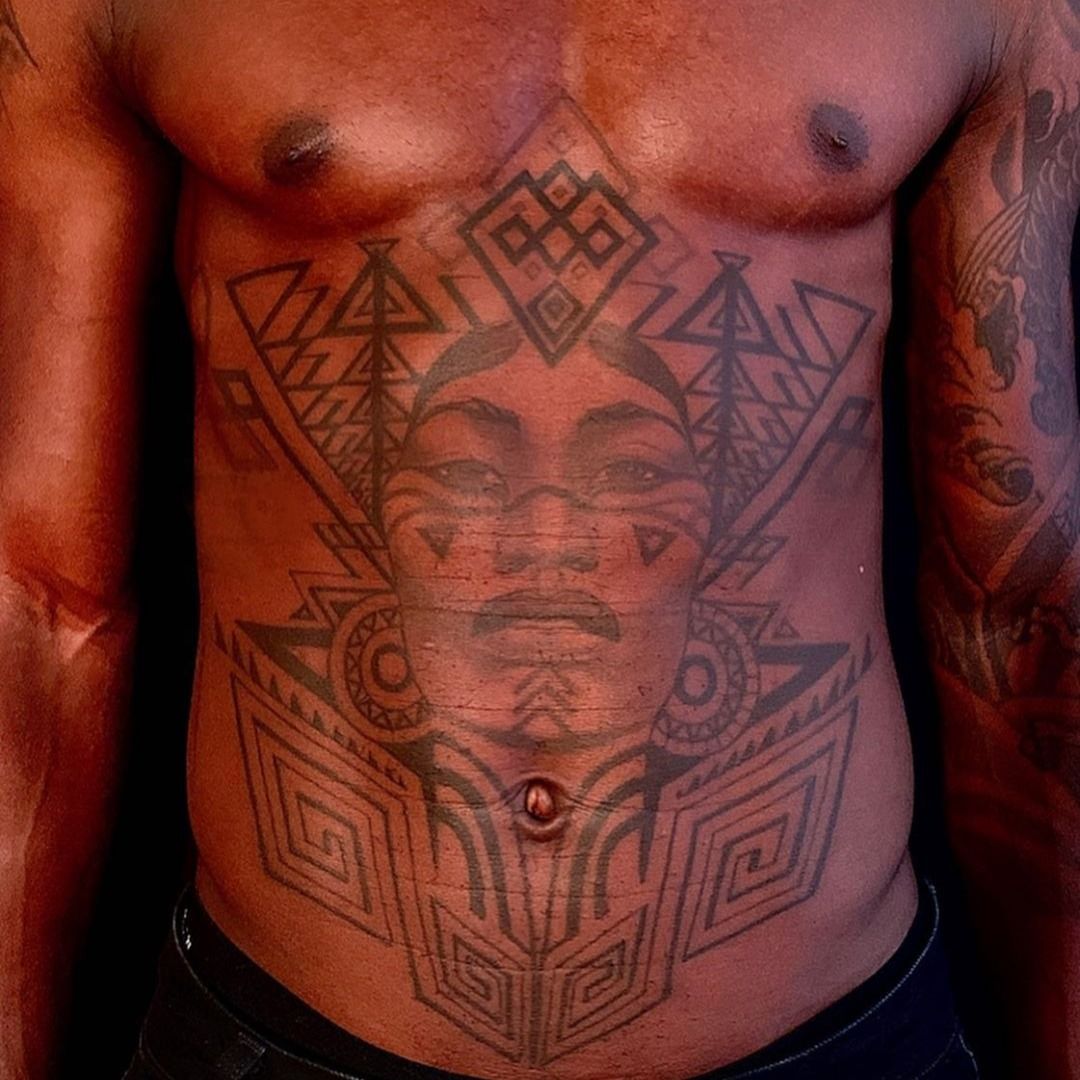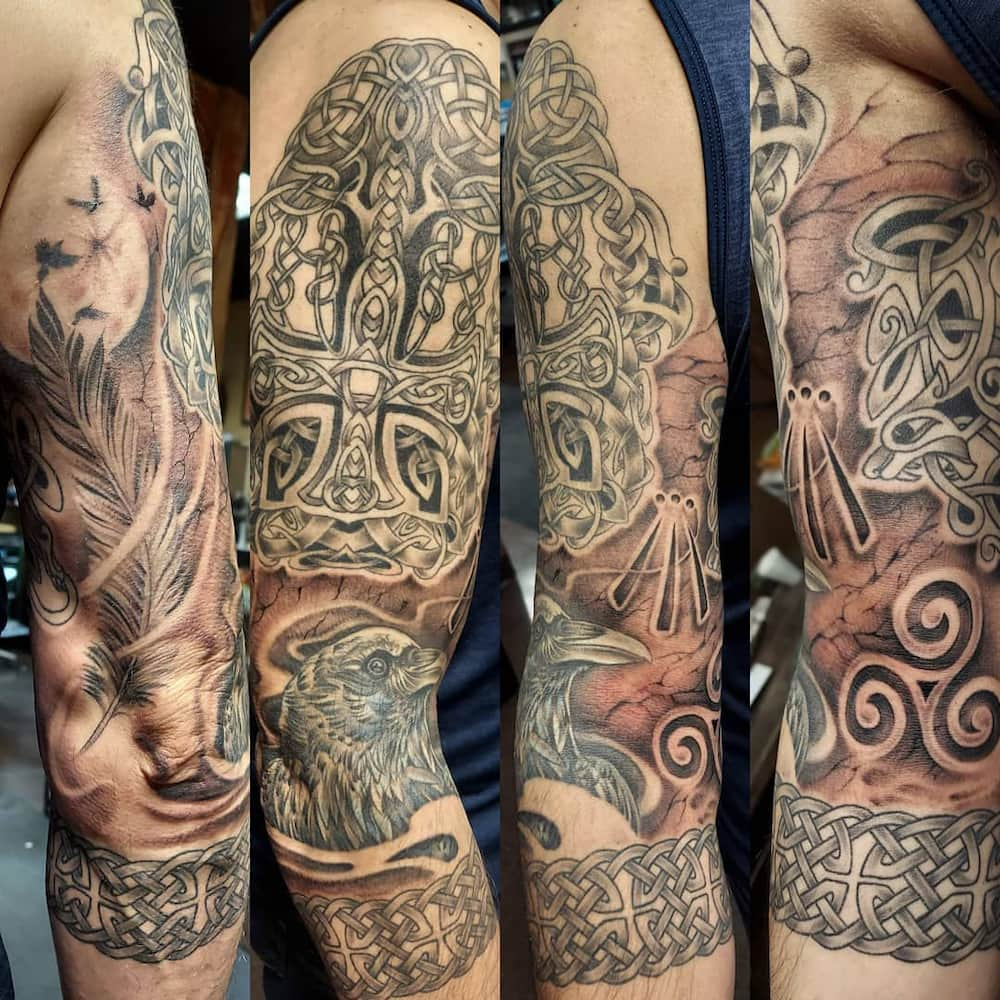Warrior African tribal tattoos have been making waves in the modern world, captivating both tattoo enthusiasts and cultural explorers alike. These ancient symbols carry deep meanings and a rich history that dates back centuries. They're not just body art; they're a testament to the strength, resilience, and spirit of African tribes. If you've ever been curious about the significance behind these designs, you're in the right place.
When we talk about warrior African tribal tattoos, we're diving into a world where every line, curve, and pattern tells a story. These tattoos were originally created to signify bravery, honor, and identity within tribes. They weren’t just for aesthetics—they were badges of courage and symbols of belonging. Understanding their origins and meanings can give you a deeper appreciation for the art form.
Today, people from all walks of life are embracing these tattoos as a way to connect with their roots or simply express their admiration for African culture. But before you jump on the bandwagon, it’s important to know what you're getting into. Let’s explore the history, significance, and modern interpretations of warrior African tribal tattoos.
Read also:Tina Leung Age Discovering The Life And Journey Of A Remarkable Woman
Here’s a quick guide to what we’ll cover:
- The History Behind Warrior African Tribal Tattoos
- The Significance of Tribal Symbols
- Popular Tribal Tattoo Designs
- Respecting Cultural Heritage
- Modern Interpretations of Tribal Tattoos
- The Tattoo Process Explained
- Care Tips for Your Tribal Tattoo
- Famous African Tribes and Their Tattoos
- Choosing the Right Tattoo Artist
- Final Thoughts on Warrior African Tribal Tattoos
The History Behind Warrior African Tribal Tattoos
Warrior African tribal tattoos are steeped in tradition and history. Back in the day, tribes used these tattoos as a rite of passage. Imagine a young warrior-to-be enduring the pain of being inked as part of his initiation into adulthood. These tattoos weren’t just decorative—they were a mark of pride and a symbol of his readiness to defend his people.
Each tribe had its own unique style and patterns, often inspired by nature, animals, or spiritual beliefs. For example, the Maasai tribe is known for their intricate beadwork-inspired designs, while the Ndebele tribe uses geometric shapes to represent their connection to the cosmos. It's like each tattoo was a map, telling the story of the wearer’s life and achievements.
Over time, these tattoos evolved, but their core purpose remained the same: to honor the warrior spirit and strengthen community bonds. The process of getting tattooed was often accompanied by rituals and ceremonies, making it a deeply spiritual experience.
How Tattoos Were Applied in Ancient Times
In ancient Africa, the tattooing process was anything but easy. Artists used sharp objects like thorns, bones, or even knives to carve designs into the skin. Then, they’d rub in natural pigments made from charcoal, clay, or plant extracts. Ouch! But hey, pain was part of the package, and it was seen as a test of endurance.
Some tribes believed that the more painful the tattoo, the greater its protective powers. So, warriors who endured the most intense designs were considered the bravest and most worthy. Talk about taking pain tolerance to the next level!
Read also:Meet Miss Swedish Bella The Rising Star Of Swedens Entertainment Scene
The Significance of Tribal Symbols
Every symbol in a warrior African tribal tattoo has meaning. These designs aren’t random—they’re carefully crafted to convey specific messages. For instance, a lion might represent strength, a snake could symbolize protection, and zigzag lines might signify the flow of energy.
Let’s break it down:
- Animals: Many designs feature animals, each with its own significance. Lions represent courage, elephants symbolize wisdom, and crocodiles stand for power.
- Geometric Patterns: These are common in many African tribes and often represent elements like water, fire, or the sun. They’re also believed to provide spiritual protection.
- Scars: In some tribes, scars were used alongside tattoos to enhance their protective qualities. This practice, known as scarification, was seen as a way to strengthen the body and spirit.
Understanding the significance of these symbols can help you choose a design that resonates with you on a personal level.
Symbolism in Modern Tribal Tattoos
While the meanings behind these symbols have remained consistent, their interpretations have expanded. Today, people get tribal tattoos to honor their heritage, express their individuality, or simply appreciate the beauty of African art. It’s all about finding a design that speaks to your soul.
Popular Tribal Tattoo Designs
Now that we’ve covered the history and significance, let’s talk about the designs themselves. There are countless options when it comes to warrior African tribal tattoos, each with its own charm. Here are a few popular choices:
- Maasai-Inspired Tattoos: These feature bold, colorful patterns reminiscent of traditional Maasai beadwork. Perfect for those who want to add a pop of color to their ink.
- Ndebele-Inspired Tattoos: Known for their geometric shapes and symmetry, these designs are ideal for those who appreciate clean lines and mathematical precision.
- Zulu-Inspired Tattoos: These often incorporate animal motifs and are great for those who want to connect with the natural world.
Each design tells a story, so take your time to find one that feels right for you. And remember, it’s not just about the design—it’s about the meaning behind it.
Tips for Choosing the Right Design
When selecting a tribal tattoo design, consider the following:
- Personal Connection: Choose a design that resonates with your values or experiences.
- Placement: Think about where you want the tattoo and how the design will look on that part of your body.
- Size: Some designs look better small, while others need more space to shine.
It’s all about finding a design that feels authentic to you.
Respecting Cultural Heritage
One of the most important things to keep in mind when getting a warrior African tribal tattoo is cultural respect. These designs are not just art—they’re a reflection of centuries of tradition and history. It’s crucial to approach them with sensitivity and understanding.
Before getting a tribal tattoo, take the time to learn about its origins and significance. This shows that you value and respect the culture behind the design. And if possible, consider supporting African artists or communities who create these tattoos.
Respect isn’t just about knowledge—it’s about attitude. Approach tribal tattoos with humility and gratitude, and you’ll be doing your part to honor their legacy.
Avoiding Cultural Appropriation
Cultural appropriation is a sensitive topic, and it’s something to be aware of when it comes to tribal tattoos. While it’s okay to appreciate and admire other cultures, it’s not okay to exploit or disrespect them. To avoid appropriation, make sure you’re getting the tattoo for the right reasons and that you’re doing so in a way that honors the culture.
Modern Interpretations of Tribal Tattoos
Today, warrior African tribal tattoos have taken on new forms and meanings. Artists are blending traditional designs with modern techniques to create unique and innovative pieces. Some even incorporate elements from other cultures to create fusion designs that tell a new story.
For example, you might see a tribal tattoo that combines Maasai-inspired patterns with Japanese cherry blossoms or Celtic knots. These hybrid designs are a testament to the evolving nature of art and culture.
Modern interpretations also allow for more personalization. You can work with your artist to create a design that reflects your individuality while still honoring the traditions of African tribes.
How Artists Are Innovating
Many tattoo artists are pushing the boundaries of tribal art by experimenting with new techniques and styles. Some use watercolor effects to give tribal designs a softer, more ethereal look, while others incorporate 3D elements to make the tattoos pop. It’s an exciting time for tribal tattoo enthusiasts!
The Tattoo Process Explained
Getting a warrior African tribal tattoo is a journey in itself. From choosing the design to sitting in the chair, there are several steps involved. Here’s a breakdown of what to expect:
- Consultation: Meet with your artist to discuss your ideas and preferences.
- Design Creation: Work with your artist to create a custom design that suits your vision.
- Tattoo Session: Sit back and let the artist work their magic. This part can take anywhere from a few hours to several sessions, depending on the complexity of the design.
Remember, the process is just as important as the result. Take your time and enjoy the experience.
Tips for a Smooth Tattoo Session
To ensure a successful tattoo session, keep the following tips in mind:
- Stay Hydrated: Drink plenty of water before and during the session.
- Eat Well: A full stomach can help you tolerate the pain better.
- Communicate: Don’t be afraid to let your artist know if you’re feeling uncomfortable or need a break.
With the right preparation, your tattoo session can be a positive and rewarding experience.
Care Tips for Your Tribal Tattoo
Once you’ve gotten your warrior African tribal tattoo, it’s important to take good care of it. Proper aftercare ensures that your tattoo heals properly and retains its vibrant colors. Here are some tips to keep your tattoo looking fresh:
- Keep It Clean: Wash your tattoo gently with mild soap and water.
- Moisturize: Apply a thin layer of tattoo-specific moisturizer to keep the skin hydrated.
- Avoid Sun Exposure: Protect your tattoo from direct sunlight for at least a few weeks.
By following these care tips, you can ensure that your tattoo remains a beautiful and meaningful part of your life for years to come.
Famous African Tribes and Their Tattoos
Let’s take a closer look at some of the most famous African tribes and their unique tattoo styles:
- Maasai: Known for their vibrant beadwork-inspired designs, the Maasai tribe creates tattoos that are as colorful as their traditional clothing.
- Ndebele: This tribe is famous for its geometric patterns, which are often used to decorate both the body and homes.
- Zulu: The Zulu tribe incorporates animal motifs into their tattoos, symbolizing strength, wisdom, and protection.
Each tribe has its own distinct style, making African tribal tattoos a rich and diverse art form.
Exploring Tribal Art Beyond Tattoos
While tattoos are a prominent form of tribal art, they’re not the only way African tribes express themselves. Many tribes also use body paint, scarification, and jewelry to enhance their appearance and convey their identity. It’s a fascinating world of art and culture worth exploring.
Choosing the Right Tattoo Artist
When it comes to getting a warrior African tribal tattoo, choosing the right artist is crucial. A skilled artist can bring your vision to life and ensure that your tattoo is both beautiful and meaningful. Here’s how to find the perfect artist:
- Research: Look at the artist’s portfolio to see if their style matches your vision.
- Reviews: Check online reviews and ask for recommendations from friends or fellow tattoo enthusiasts.
- Consultation: Schedule a consultation to discuss your ideas and get a feel for the artist’s personality and expertise.
Remember, the artist you choose will play a big role in the final outcome, so take your time to find the right fit.
What to Look for in a Great Artist
A great tattoo artist should have:


